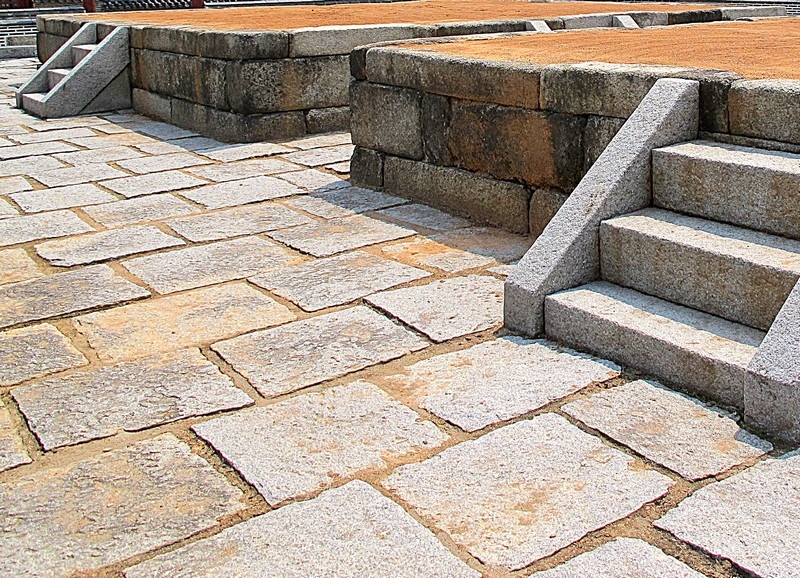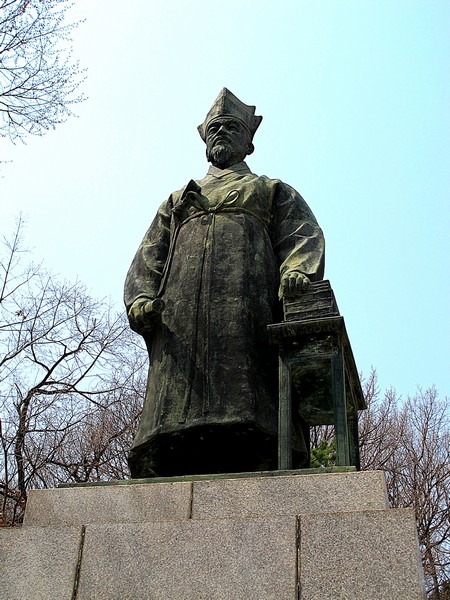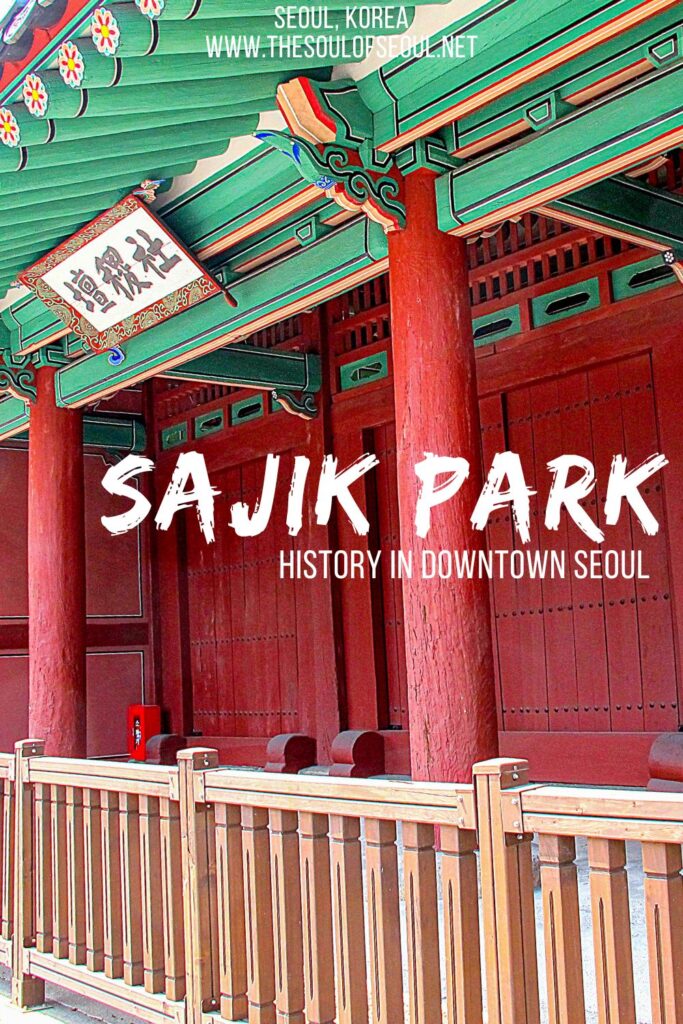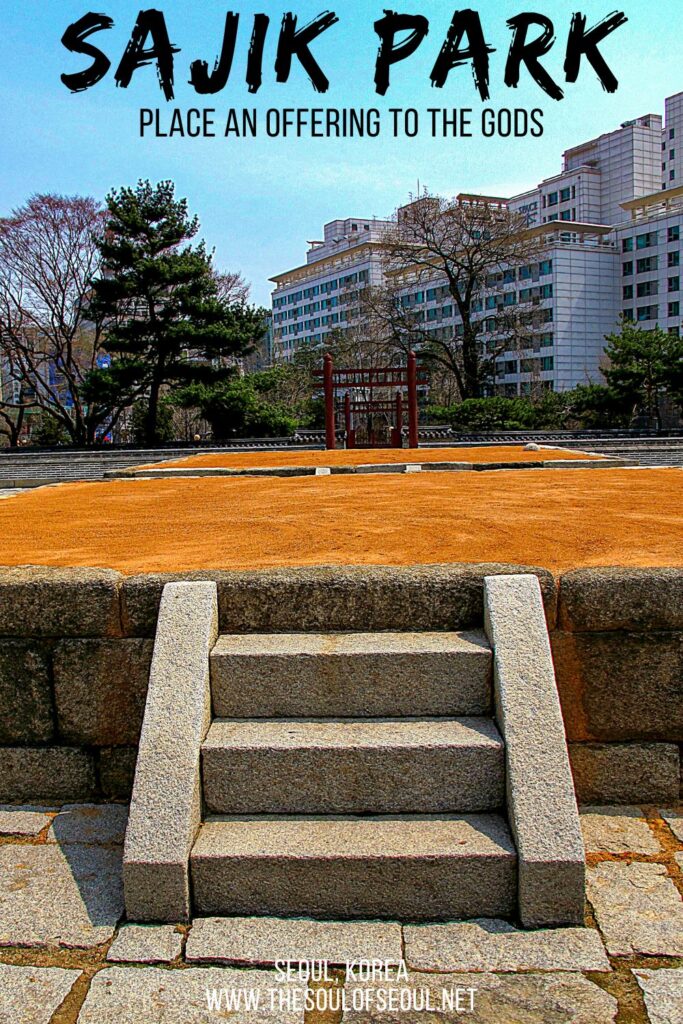Sajik Park: History in Downtown Seoul
Last Updated on December 16, 2023
When you ride a bus in Seoul, you begin to notice things you never noticed before. There are traditional gates that sit here and there and you might begin to wonder where they lead. After visiting major sites like Gyeongbokgung Palace and Jongmyo Shrine, you might be interested in finding the smaller hidden gems like Sajik Park. A traditional gate opens onto a path that sits on the southeastern side of Mt. Inwang. Finding a gate ajar on the east side, we stepped in and found a kind of space I hadn’t yet seen in Korea.

Learn more about this historical place in downtown Seoul:
(This post contains affiliate links, which means I receive a certain percentage of a sale if you purchase after clicking. These funds go to maintain the site. Thank you for your support.)
How To Get There
Address: 1-48 Sajik-dong Jongno-gu, Seoul (서울특별시 종로구 사직동 1-48)
Directions: Gyeongbokgung Palace Station (Seoul Subway Line 3), Exit 1. Go straight for 5min to arrive at Sajik Park on the right.
Basic Info
Hours: March – October: 9AM – 6PM; November – February: 9AM – 5:30PM
Admission: Free
Amenities: bathrooms, basketball hoops, dirt soccer area
The History
Sajik Park (사직공원) was named in 1395 by Taejo Lee Sung-gye who made the first Sajik altar, as well as built Gyeongbokgung and Jongmyo Shrine. Rites were held here regularly dating back to the Three Kingdom Period in Korea from the 4th to the 7th centuries. Under Japanese colonial rule, these rites were abolished in 1908 until they were reintroduced with the Seoul Olympics in 1988. One can see the rites performed on the third Sunday of September every year. This ceremony has been designated as Intangible Cultural Property No. 111.

The rites involve offering slaughtered cattle, pig and lamb as well as grains to the gods followed by ceremonies offering silk, known as jeonpye, welcoming the deities, known as yeongsinnye, offering three wines, choheonnye, aheonnye and jongheonnye, sharing the food, known as eumbongnye, and finally lighting the written prayers on fire, known as mangnye.
Outside of the altar area is plenty of space to run around, as most of the children were doing this past weekend. There are basketball hoops and a playground as well as a Children’s Library nearby. Behind the altar area are two large statues, one represents Lee Yulgok, one of the most prominent scholars and philosophers during the Joseon Dynasty who lived from 1536 to 1584 and the other statue represents Sin Saimdang, an artist and poet as well as Lee Yulgok’s mother who lived from 1504 to 1551.


Two platforms surrounded by what will be grass very soon with the coming of summer that were once used to make offerings to the god of land (Sa) and the god of grains (Jik) with the belief that the destiny of the entire nation was dependent upon the mercy of these two deities as well as the deceased royal ancestors who would be prayed for at nearby Jongmyo Shrine. Joseon rulers saw these rites as the most important of state affairs to ensure the safety and prosperity of their dynasty and performed them in February, August and in times of drought as well as in times of trouble.
Following a path up some stairs behind these statues leads to a shrine honoring Dangun, the founder of Gojoseong, the first Korean kingdom in 2333BC. He is said to be the grandson of heaven. This small park represents some of the oldest traditions in Korea and is a pleasant stop on the way to or from Insa-dong. It is also a good start to a hike up Inwang Mountain.
Did you like this post? Pin IT!



